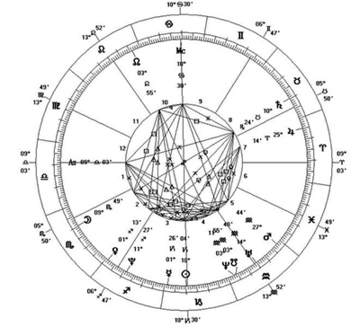More General Topics
- Facts About Greece
- Flag Of Greece
- Greece Climate
- Greece National Anthem
- Greece Olympics
- Greece Time
- Greece Weather
- Greek Army
- Greek Cross
- Greek Flag
- Greek Games
- Greek Government
- Greek Hairstyles
- Greek Name Days
- Greek Nose
- Greek Royal Family
- Greek Sandals
- Greek Time
- Greek Universities
- Greek Zodiac
- Population Of Greece
More Topic Categories
Greek Zodiac
 The Greek zodiac is a circle of twelve 30 degree divisions of celestial longitude that are centered upon the ecliptic, the path of the Sun across the celestial sphere over the course of the year. These divisions are better known as signs. It has been in use since the Roman era and is based on concepts by Hellenistic astronomy, which in turn derived from earlier astronomy systems. The term zodiac comes from Greek meaning “circle of animals”, as half of the signs of the Classical Greek zodiac are animals.
The Greek zodiac is a circle of twelve 30 degree divisions of celestial longitude that are centered upon the ecliptic, the path of the Sun across the celestial sphere over the course of the year. These divisions are better known as signs. It has been in use since the Roman era and is based on concepts by Hellenistic astronomy, which in turn derived from earlier astronomy systems. The term zodiac comes from Greek meaning “circle of animals”, as half of the signs of the Classical Greek zodiac are animals.Below are mentioned the twelve signs of the zodiac. In English, the Latin name is used; here are also mentioned the transliterated Greek names as well as their meaning in English. The signs are Aries (Krios – the ram), Taurus (Tauros – the bull), Gemini (Didymoi – the twins), Cancer (Karkinos – the crab), Leo (Leon – the lion), Virgo (Parthenos – the maiden), Libra (Zygos – the scales), Scorpio (Skorpios – the scorpion), Sagittarius (Toxotes – the archer), Capricorn (Aigokeros – the goat – horned), Aquarius (Hydrokhoos – the water – bearer), and Pisces (Ikthyes – the fishes). It should be noted that the zodiacal signs should be distinguished from the respective constellations, as the latter tend to take up varying widths of the ecliptic, while the zodiac is based on the assumption that all divisions take up exactly 30 degrees of the ecliptic each.
The division of Aries, which is the first of the twelve and starts at zero degrees on the ecliptic, theoretically begins on the moment of the vernal equinox. Although the precise Gregorian times vary slightly from year to year, the Sun enters the division of Aries on 21 March, Taurus on 21 April, Gemini on 22 May, Cancer on 22 June, Leo on 23 July, Virgo on 23 August, Libra on 24 September, Scorpio on 24 October, Sagittarius on 23 November, Capricorn on 22 December, Aquarius on 21 January, and finally Pisces on 20 February.
In modern astronomy, the zodiac is a spherical celestial coordinate system, setting the ecliptic as its fundamental plane and the position of the Sun at vernal equinox as its prime meridian. The zodiacal constellations are, thus, a convenient way of marking the path of the Sun across the sky, as well as the path of the moon and planets along that ecliptic.
See Also:
 Athens Photos
Athens Photos
 Santorini Photos
Santorini Photos
 Crete Photos
Crete Photos
 Meteora Photos
Meteora Photos
 Corfu Photos
Corfu Photos

